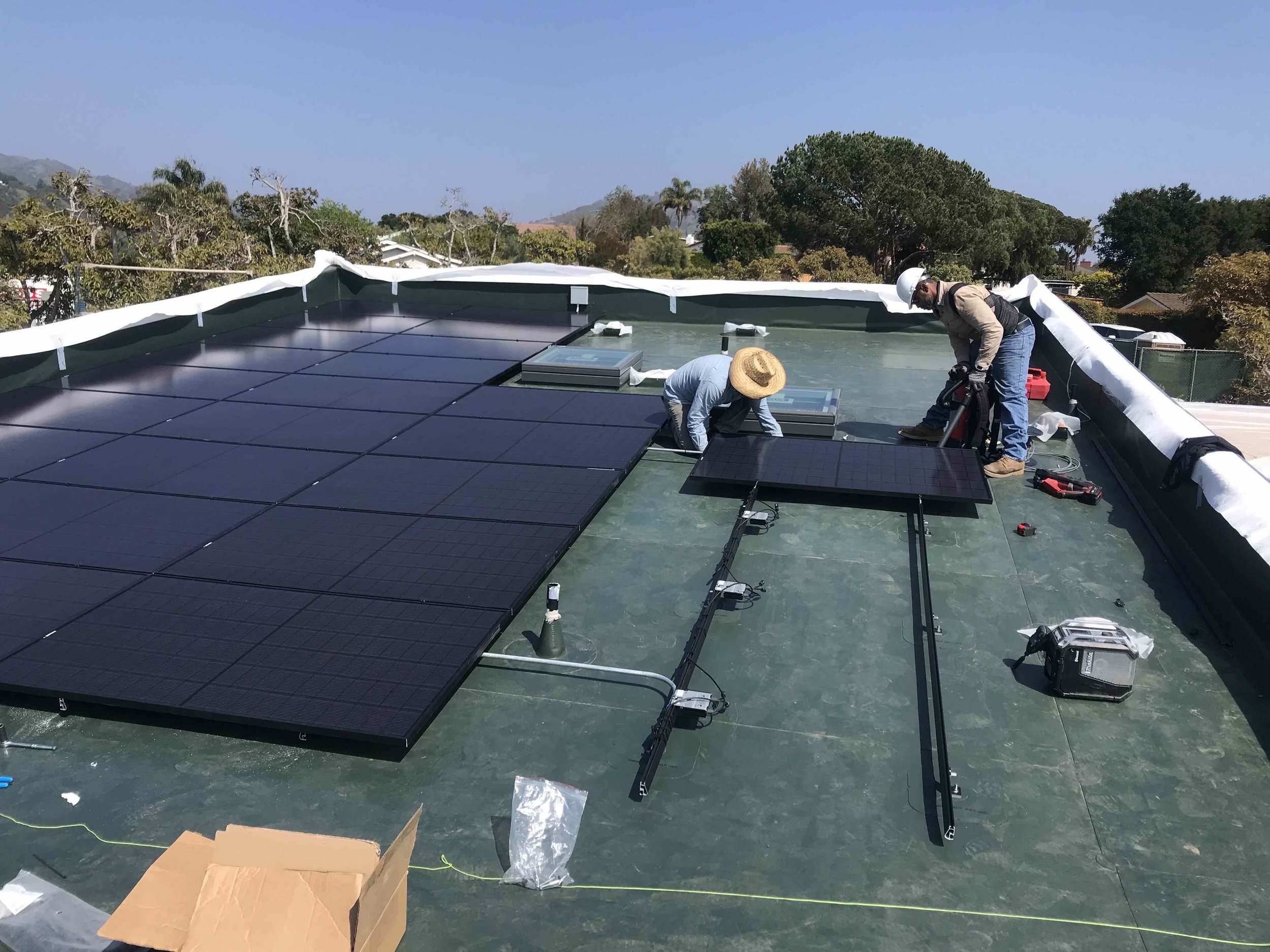Flipping the Switch to Electric: Carpinteria Couple Is All-In to Build Smart
When Hunter and Casey Turpin were in the market for a new home, they stumbled upon their dream lot instead: an acre of land on a ridge above Carpinteria. “It’s one of the last little undeveloped plots up there with just some avocado trees and some oaks,” says Hunter.
“It happened pretty quickly,” laughs Casey. “The next thing we knew we were building a house.” With lots of space, but less budget, the young couple had to be strategic. “We are building an 800-square-foot structure for now that will meet all of the guest house requirements, with the hope that one day we will be able to build a main house and then convert this structure easily into a guest house,” she says.
Putting everything they want into a small footprint is “almost like designing for a boat,” says Hunter.
Because there was no gas line running to the lot, one of the first decisions was whether to trench for gas or go all-electric. “Cost was a big part of that conversation,” Casey says. “It was seemingly going to be pretty expensive to trench for gas, and while solar panels are going to be pretty costly as well, it just felt like a better investment to build something and have a more sustainable solution for energy.”
“I think we’d set out to make sure we were always thinking about sustainability and building as green and as consciously as we could,” says Hunter. As part of Smart Build, the County of Santa Barbara's green building program, the Turpins received free advice on energy-efficient strategies from a number of local professionals.
Adds Casey, “That’s been a really great resource because we’re participating in their green building program and they help you come up with energy efficient solutions for your design and construction strategies.”
Working with past Community Environmental Council (CEC) Board President Dennis Allen of Allen Construction, Mary Andrulaitis of Neumann Mendro Andrulaitis Architects, and Tom Hughes of Mechanical Engineering Consultants, Inc. has been key to the process of envisioning the modern, contemporary, all-electric ranch home the Turpins have constructed.
“We are trying to leverage as much of the natural heat and also natural air flow that we can,” says Hunter, who has been busy researching solar technologies, battery walls, roofing materials and the like. They are planning to use a heat pump for heating and cooling, and an electric spa heater jacuzzi from Gordon & Grant. They also own an electric washer and dryer and will be using an induction cooktop.
While the Turpins are on the cutting edge, we can expect to see an increase in building electrification on the Central Coast as the technology becomes more widely available. “Whether working on new construction or a remodel, we want people to be thinking ahead. Heat pumps are one of the electric technologies we’re super excited about,” says Ryan Cullinen, Director of Pre-Construction at Allen Construction. “It’s the same reason why any time we are looking at putting solar on a home for one of our projects, we always recommend wiring for an electric vehicle charger. Even though you’re not required to drive one now, you will likely have one in the future.”
“Our intention has always been to build and live as sustainably as we can, keeping climate impacts at the forefront. We’ve got this amazing opportunity and it definitely feels like partly our responsibility – and duty – to do so,” says Hunter. They had budget constraints, but, “What we found is we didn’t have to sacrifice much at all as far as practicality, functionality or design in order to meet our sustainability goals. That’s the cool thing about all the options and advancement going on right now. If you want to make climate considerations a priority then you don’t have to necessarily let your other priorities go or make too many concessions.”
This is one of many inspiring stories that demonstrates how individuals in our region are taking bold climate action to build community resilience – and why CEC continues to work to rapidly move the Central Coast toward 100% clean, renewable electricity to power our homes, businesses, and transportation. See below for more opportunities to learn and engage.
Additional Resources
Learn more about Santa Barbara County’s Smart Build green building program.
Attend 3C-REN’s Stay Cool This Summer With Higher-Performing Air Conditioning webinar on August 30, 2022 for an overview of all-electric heat pump appliances and stories from real homeowners who have installed heat pumps.
Read more about federal income tax credits and other incentives for energy efficiency.
Watch this Electrification Overview Presentation (geared to builders).
Review the EPA Report on Greenhouse Gas Emissions.
Read the Rocky Mountain Institute report on The Economics of Electrifying Buildings.
Other Related Articles on CEC:
WIN: All electric new building construction is the future of Santa Barbara
Flipping the Switch to Electric: A Green Building Pioneer’s Take on Heat Pumps
Flipping the Switch to Electric: CEC’s Board President is Pumped About Her Heat Pump
Flipping the Switch to Electric: Replacing Natural Gas with Electric Heat
Leslie Dinaberg has been a professional editor and writer for more than 25 years, most recently as the Editor in Chief of Touring & Tasting Magazine. Prior to that she spent a decade as the Managing Editor of Santa Barbara SEASONS. Leslie currently works on a contract basis, offering her expertise as an editor, writer, and strategic and creative communications professional to a number of regional and national publications, as well as to select nonprofit organizations that are close to her heart.


